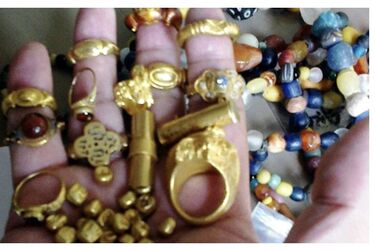Treasures of mysteriously disappeared Buddhist empire found in Indonesia

The treasures of the Buddhist empire that mysteriously disappeared in the 14th century have been found on the Indonesian island of Sumatra. The discovery was made by local fishermen while diving into the Musi River, who managed to find many valuable artefacts: an eighth-century Buddhist statue inlaid with precious stones, jewellery - gold rings, earrings and necklaces
Wreckwatch writes about it.
In addition, statuettes made of gold and bronze, hammers with the demon face of Kali, ceremonial gold rings set with rubies, four-pointed scepters and gold sword handles were found in the shallow water.
"Over the past five years, we have acquired many unusual items. Coins from different eras, gold and Buddhist statues, precious stones - all the things you could read about in The Sindbad the Sailor and which seemed like fiction. But it's all real," said British archaeologist Sean Kingsley.
According to scientists, the treasures found indicate that Shrivijaya was a "water world" - its inhabitants lived on the river. There is information about this in ancient texts. However, during the decline of civilisation, their homes and temples made of wood sank with everything inside.
Scholars note that in its heyday, the Buddhist empire controlled the sea lanes of the Silk Road, which connected China, Southeast Asia, the Indian subcontinent, the Arabian Peninsula, Somalia, Egypt, and Europe.
"For over 300 years, the rulers of Srivijaya dominated the trade routes between the Middle East and China. "The Golden Isle became an international crossroads for the finest goods of the time, allowing the rulers to amass incredible treasures," Kingsley said.
Read also: They could become crippled or die: How ancient people took risks when making stones
The reason for the decline and disappearance of the empire is still unknown. Probably, it was destroyed by cataclysms - volcanoes or floods. But none of the versions has yet been officially confirmed.
Science is also harmed by the fact that fishermen find unique treasures and simply sell them to science, without giving it the opportunity for detailed study. The finds are bought by collectors. Thus, the vanished empire, having appeared for a moment, disappears again.
As a reminder, archaeologists said they had found evidence of the possible existence and possible location of a key Viking city from the 10th century.
If you want to get the latest news about the war and events in Ukraine, subscribe to our Telegram channel!
